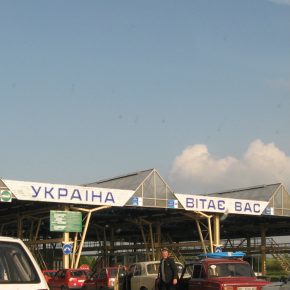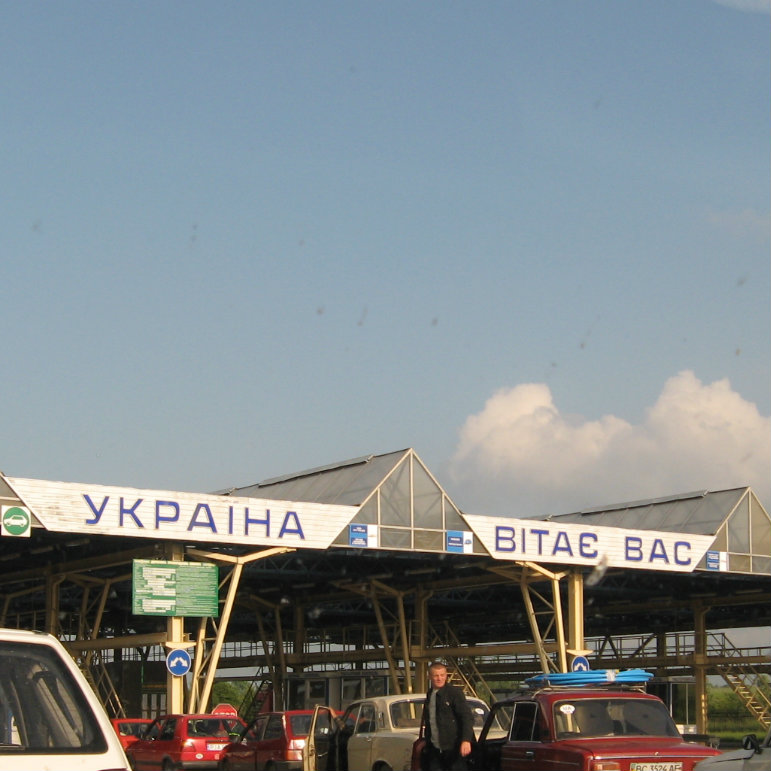Tydzień w gospodarce
Category: Trendy gospodarcze

Polish-Ukrainian border (Go Travel, CC BY)
Migration is already an economic lifeline for the cash-strapped country. Only in the first quarter of 2015, the Ukrainians working in Poland transferred PLN2.1bn — which is a more than 77 per cent increase compared to 2014. That will become even more significant once visa rules are eased.
The Commission is to finalize its visa decision early this year. Once approved by the European Council and the European Parliament, Ukrainians will be able to travel to all EU countries except for the U.K. and Ireland for a period of up to 90 days “Kiev has met all the criteria for EU-Ukraine visa liberalisation,” reported the kresy24.pl website.
Even without the easing of visa requirements, last year saw a record number of Ukrainian economic migrants coming to Poland. Labour market experts say as many as 600,000 people a year are coming. In past years, annual migration came to about 300,000-400,000.
Estimating the real scale of the phenomenon is very difficult. Official government statistics cover only a marginal section of Ukrainian migrants. In my research I have used the most obvious sources that should receive data on foreigners working for Polish employers.
The website of the new Ministry of Family, Labour and Social Policy publishes quantitative data on work permits issued to Ukrainians working in Poland for over six months. Those who stay for up to half a year have to observe very few formal procedures, and if they want to extend their stay in Poland for up to 12 months, they just need to submit a declaration on the intent to employ them by a Polish employer to the appropriate employment office. In the second half of 2015, Ukrainians were issued 20,092 work permits. For the whole of 2014 28,913 permits were issues, showing the increase in official labour migration
Partial data on foreigners employed in Poland are also gathered by the Social Insurance Institution (ZUS). It receives insurance declarations only from a small proportion of Ukrainian employees. That is because Polish legislation is silent on requiring employers recruiting Ukrainians to offer them contracts providing social insurance. In the first quarter of 2015, 75,500 insurance declarations filed with ZUS were for Ukrainian nationals (of which 39,300 were employees as defined by labour law).
The scale of the phenomenon of Ukrainian migration can also be seen in Poland’s balance of payments for the second quarter of 2015, prepared by Narodowy Bank Polski. It found that bank transfers of wages of by Ukrainian non-residents (people working in Poland for up to a year) came to PLN2.1bn in the first three months of 2015 alone, and were 77.3 per cent higher than in the same period in 2014. By comparison, transfers of wages from Poles working abroad came to PLN4.036bn over the same period, although the scale of Polish labour migration is much larger.
Although many Poles may believe the country is being flooded by cheap workers from Ukraine, that is not necessarily true. Instead, most Ukrainians arriving in Poland consider it a transit country and, after getting a visa (which has been rather easy since 2008 when simplified procedures were introduced) they tend to leave for the West.
With a Polish visa, Ukrainians can travel freely to all the countries of the Schengen Area for 90 days. Now that visa-free travel for Ukraine has been approved, the number of Ukrainians travelling to Europe is expected to rise still further, with most continuing to pass through Poland on their way to wealthier countries like Germany.
According to the statistics prepared by the Ministry of Labour, only 185 unemployed Ukrainian citizens were entitled to Polish unemployment benefits in 2015. However, this data says nothing about the period of this benefit payment or how many of these Ukrainians were permanently resident in Poland with a work permit or a work visa, and how many were in the country for other reasons (e.g. as family members of Polish citizens). For Ukrainians, applying for Polish benefits is not only not particularly lucrative, it is also risky. Article 101 of the law on foreigners says that temporary residence permits are withdrawn when the purpose of the stay has ended, that is when someone no longer has a job. As well, a foreigner is obliged to notify the local government within 15 days of becoming unemployed.
In practice this means that if an Ukrainian officially reports losing his job, and can’t find other work within 30 days, his temporary residence and work permit will be withdrawn and he will have to return home. More than 3,500 Ukrainian citizens faced such procedures in the first half of 2015. These are usually people who had fallen victim to organized crime groups controlling the market for temporary work permits. District employment office workers talk openly about a plague of false declarations of intent to employ foreigners issued by sham employers.
There are also so-called dead souls —people who were registered at Polish employment offices but took up employment in other EU countries and were caught working illegally there. Experts think that we will see many more such cases this year.
One of the consequences of opening EU borders to Ukrainians will be a growth in the shadow economies of the main destination countries such as Germany. Although entry into the EU will be easier for Ukrainians, procedures for work permits or legalization of stay will remain unchanged. Poland’s western neighbours are very strict about both the residence requirements and the protection of their domestic labour markets.
A surge in Ukrainian migration took place in 2014 and has not stopped. The reason is the war in Ukraine and the devastation of the economy. The war against Russian-backed separatists in the east of the country, and Russia’s earlier annexation of Crimea pushed this large and relatively economically stable country into an abyss of inflation, unemployment and poverty in only 20 months. The average pay in Ukraine today is UAH4,400, or only PLN748 at current exchange rates. In 2013 the average pay was lower — UAH3,400 — but because of the more favourable exchange rate it came to PLN1,360.
The fall in the purchasing power of the hryvnia is accompanied by a sharp increase in prices of fuel, medicines and food. The unemployment rate in the first half of 2015, calculated according to the International Labour Organization indicators (i.e. the percentage of the unemployed to the whole working population), was 9.2 per cent, but in some regions it reached 13-15 per cent.
Ukraine is facing further painful decisions, this time concerning the restructuring of numerous major state-owned enterprises. Those reforms will lead to mass layoffs and force thousands more people to leave the country in search of work.
How will the situation affect Poland’s economy? Data from the ministry of labour indicate that most of Ukrainians who come to Poland (46 per cent to the agriculture sector, 14 per cent to the construction industry, 11 per cent to the processing industry) are rather low-skilled workers. They are prepared to work for low wages, even below the minimum wage. This is good news for Polish small and medium-sized companies. Some industries, such as agriculture, simply would not cope without Ukrainian seasonal workers. A lot of small construction, service-providing or artisan companies would also be threatened with serious financial problems.
However, there is a price to pay for this low-cost relief for Polish companies. Relying on cheap foreign workers limits pay rises for Polish workers in those industries, something Polish trade unions are too weak to prevent.
Cheap labour in turn weakens the incentive for companies to shift to less labour-intensive and more capital-intensive technologies, which leads to boosting productivity and increasing the value added of Polish enterprises.
“Maintaining low wages eventually results in a weakening of domestic demand growth and cools the domestic impulse for economic growth. Most Ukrainians intend to return home so they save as much as they possibly can or immediately send money to their families, boosting consumption on the Dniester and the Dnieper, not on the Vistula,” said Łukasz Komuda of the Socio-Economic Initiatives Foundation (Fundacja Inicjatyw Społeczno–Ekonomicznych).




